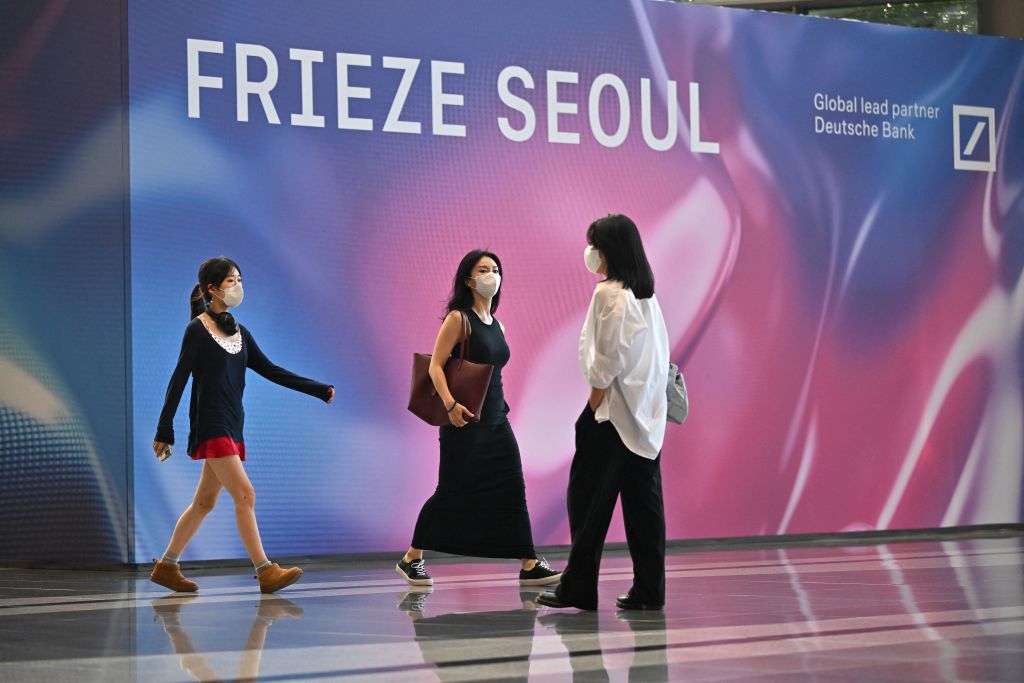To receive Morning Links in your inbox every weekday, sign up for our Breakfast with ARTnews newsletter.
The Headlines
BOLD FUTURE. As the number of big dealers throwing in the towel rises and naysayers warn that the art market apocalypse is upon us, others are looking to a brighter future by reinventing the gallery model. Bolding Gallery, co-directed by Esme Blair and Sam Lincoln, has carved out a distinctive niche within London’s art scene over the past nine months—not by claiming a grand position, but by embedding itself into the overlooked architectural crevices of central London’s typically inaccessible spaces. Its foundation isn’t built on commercial ambition or industry capital, but begins, simply and resolutely, with the art and the artist, Plaster Magazine reports. Since its launch in December last year, the gallery has staged nine exhibitions across two venues, showcasing the work of 15 artists and quickly establishing itself as a vital platform for experimental performance and research-driven practices. Its unconventional structure deliberately avoids aesthetic categorization, placing the priorities of emerging artists front and center. At Bolding, the act of building an exhibition is considered integral to artistic practice itself. “The great advantage of London as a city is the scrappiness you see in how people piece their lives together. We’re figuring out how to work that into exhibition making,” Lincoln said.
Related Articles

ASIAN OPTIMISM. Artnet is doing its best to look on the bright side, too, writing that while concerns about the global art market’s ongoing stagnations are understandable, there’s reason for exhibitors heading to Japan and South Korea next month for the art fair merry-go-round (Frieze Seoul, Kiaf Seoul, Seoul Art Week, Tokyo Gendai, and the Aichi Triennale) to feel optimistic—at least based on insights uncovered through a deep dive into auction data from the Artnet Price Database. Yes, it’s true that fine art auction sales declined in both countries in 2024, compared to 2023, in line with the global downturn. But Japan’s 19 percent drop—to $149.8 million—was notably better than the worldwide decline of 27.3 percent, as reported in the latest Artnet Intelligence Report. Japan also saw 24,526 lots offered at auction this year—the second-highest figure in the past decade, just behind 2023. Even more telling, the country posted a 73.9 percent sell-through rate—the highest in that ten-year span. These numbers reflect a trend noted by economist Clare McAndrew, whose research shows that Japan’s art market has outperformed the global average over the past five years. The country remains a stronghold for blue-chip artists like Yayoi Kusama, Yoshitomo Nara, and Takashi Murakami, but rising talent is gaining serious traction too. Yu Nishimura (b. 1982), for example, has seen his auction total skyrocket from $272,264 last year to over $2.25 million so far in 2025.
The Digest
Affordable Art Fair’s Erin Schuppert explains how next-Gen collectors are transforming the market. [Observer]
Sheila R. Canby, the Metropolitan Museum of Art curator “who humanized Islam,” has died at 76. [New York Times]
Here are five studios of prominent artists that the public can visit, including Claude Monet’s gardens to Frida Kahlo’s bedroom. [The Times]
Do Picasso’s final paintings reveal an existential crisis? [Artsy]
The Kicker
ART FARM FRIENDSHIP. Cup of tea in hand, artist Victoria Rees led The Times down a garden path from her hillside home near Wotton-under-Edge, Gloucestershire, weaving through the overgrown branches of an old apple orchard to a small wooden studio bathed in natural light. Floor-to-ceiling windows frame sweeping views of the green valley below. Just behind her was local farmer Dave Newman, carefully balancing a yellow teapot, a mug, a muffin—and a handwritten story scrawled on the back of an envelope. It’s quiet ritual the unlikely pair have shared nearly every Tuesday afternoon for the past 13 years. Newman took his place as Rees’s model, giving her time and practice to sharpen her speed and precision in oil painting. For the next 50 minutes they talked, laughed, and shared stories while Rees completed a small one-off portrait of Newman to add to the hundreds of others of him in her collection. “It’s a collaboration more than anything else,” Newman, 70, said. “I don’t feel I sit for her as a model. We collaborate to produce a small portrait. And we talk. It’s like a counseling session for both of us.” As for Rees, she explains, “I’ve come to understand Dave’s life as a farmer and what that means. And actually there are lots of similarities, in that as a painter you are alone a lot in your studio. And as a small farmer, Dave ran that farm by himself, he was alone a lot working. So there was a lot to exchange and understand about each other.”

